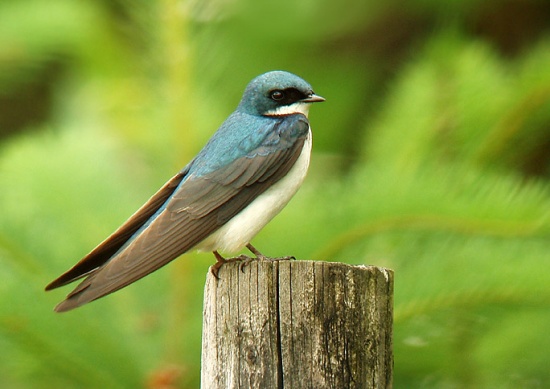- Tachycineta bicolor
Identification:
L. 5-6 1/4 in(13-16 cm)
- Sparrow-sized
- Metallic blue or blue-green above
- Clear white below
Young birds are dull brown above but may be distinguished from Bank Swallow and Northern Rough-winged Swallow by their clearer white underparts. Voice: Cheerful series of liquid twitters.
Distribution
Breeds from Alaska east through northern Manitoba to Newfoundland and south to California, Colorado, Nebraska, and Maryland. Winters north to southern California, Gulf Coast, and Carolinas; occasionally farther.
Taxonomy
This is a monotypic species.
Habitat
Lake shores, flooded meadows, marshes, and streams.
Behaviour
Breeding: 4-6 white eggs in a feather-lined cup of grass placed in a hole in a tree or in a nest box
Diet: Insects caught on the wing. During winter, also feeds on berries.
This bird's habit of feeding on bayberries enables it to winter farther north than other swallows. It is the first of our swallows to reappear in the spring. Hole-nesters such as the Tree Swallow often face a housing shortage and must fight to get into, or keep, woodpecker holes or other sought-after nest sites. Man-made breeding boxes may help increase the numbers of these birds. The Tree Swallow almost invariably nests in the immediate vicinity of water. Tree Swallows often enjoy playing with a feather, which they drop and then retrieve as it floats in the air. They gather in enormous flocks along the coast in fall, where they circle.




